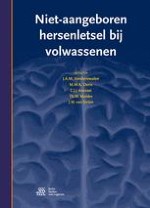Samenvatting
Met de komst van het beeldvormend onderzoek is de aard van het neuropsychologisch onderzoek drastisch veranderd. De afgelopen decennia werden beeldvormende technieken zoals positronemissietomografie (pet) en ‘magnetic resonance imaging’ (magnetische resonantie; mri) ontwikkeld en werd de kwaliteit van computertomografie (ct) enorm verbeterd. Richtte het neuropsychologisch onderzoek zich tot in de jaren zeventig op het vaststellen of er al of niet sprake was van ‘organiciteit’ en op het bepalen van de veronderstelde locatie van de cerebrale beschadiging of disfunctie, met de komst van de geavanceerde beeldvormende technieken blijken deze vraagstellingen gedateerd. Dit betekent geenszins dat het neuropsychologisch onderzoek overbodig is geworden. Het onderzoek naar de cognitieve en gedragsgevolgen van hersenbeschadiging blijft, ondanks de geavanceerde beeldvormende technieken, van het grootste belang voor de klinische praktijk, mede omdat de individuele variatie in de samenhang tussen beschadiging en stoornis groot is. In dit hoofdstuk worden de voor de klinische praktijk meest relevante beeldvormende technieken besproken, waarbij in het bijzonder aandacht wordt besteed aan de vele mogelijkheden van de nieuwe generatie beeldvormende technieken. Daarna wordt ingegaan op de relatie van deze technieken tot het neuropsychologisch onderzoek.
